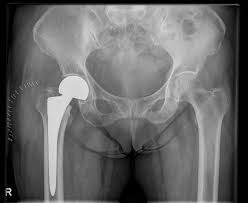
What is Partial Hip Replacement?
A surgical procedure wherein only the replacement of the femoral head of the hip joint takes place is known as partial hip replacement. Here, the socket does not see the replacement.
On the other hand, a prosthetic is used as a replacement in total hip replacement for the acetabulum. This replacement is done mostly for cases where hips are broken or fractured.
In essence, partial hip replacement is ideal for dealing with cases of traumatic hip injury. It’s not a treatment for bone disease.

What are the types of Partial Hip Replacement?
There are two types of performing the partial hip replacement. Either of the two would take place as per the need of the patient.
Let’s have a look at both of them:-
• Anterior Approach – In this mode, a cut is made in the front of hip, and it also not calls for mobility of muscles. This method is not used by all surgeons. • Posterior Approach – In this mode, the joint is accessed through the muscles in the hip and buttocks.

Indications of partial hip replacement
There are many signs and symptoms when a doctor recommends a partial hip replacement, like:-
• When a patient suffers from serious arthritic conditions • When the hip has fractures • When the hip has aseptic necrosis • When the pain is severe • When the daily chores are restricted • When the hip has considerable stiffness • When anti-inflammatory medicine has failed to allay the pain

Treatment of partial hip replacement
The procedure involves the removal of the damaged parts of the hip joint and their replacement with artificial parts. Even before the surgery starts, the patient may need to take many visits to the hospital.
In some cases, the patient needs to donate the blood for transfusion tasks. Certain medications are not allowed to be taken before the operation starts.

